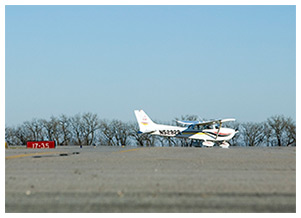Training Tips
|

Getting sloppy
A pilot lands a Cessna 172 and discovers that under a notice to airmen (notam) in effect, the airport is closed. At another field, a departing pilot fails to comply with a temporary flight restriction's (TFR) requirement to obtain a transponder code before takeoff. A pilot blunders into airspace being used by aircraft practicing for an upcoming airshow, creating a collision hazard.
What lapse did these pilots have in common? In each case, the pilot started the process of obtaining a preflight briefing, but failed to complete the task. Each pilot got sloppy.
A student pilot learns early in training that the first step in preparing for a flight scheduled several hours or more in the future is to request an outlook briefing from flight service. But don't stop there.
"An outlook briefing should be requested when a planned departure is six hours or more away. It provides initial forecast information that is limited in scope due to the timeframe of the planned flight. This type of briefing is a good source of flight planning information that can influence decisions regarding route of flight, altitude, and ultimately the go/no-go decision," explains the Pilot's Handbook of Aeronautical Knowledge.
The discussion goes on to emphasize what to do next: "A prudent pilot requests a follow-up briefing prior to departure since an outlook briefing generally only contains information based on weather trends and existing weather in geographical areas at or near the departure airport. A standard briefing near the time of departure ensures that the pilot has the latest information available prior to their flight."
As the incidents (each reported to the Aviation Safety Reporting System by the pilot involved) demonstrate, weather isn't the only critical information to update before flying. Notams, especially TFRs, can change with little notice. To depend on an outlook briefing for information about TFR procedures or scheduling is a potentially serious error.
Never leave assumptions unverified: It had not occurred to the pilot who tangled with the airshow aircraft that they would be up working on their routines so soon. Having received an outlook briefing the previous day, the pilot admitted passing up several opportunities to receive updates before flying, and compromised safety.
"On this flight I got sloppy and it bit me," the pilot reported. "I guarantee it will never happen again."
|
|



